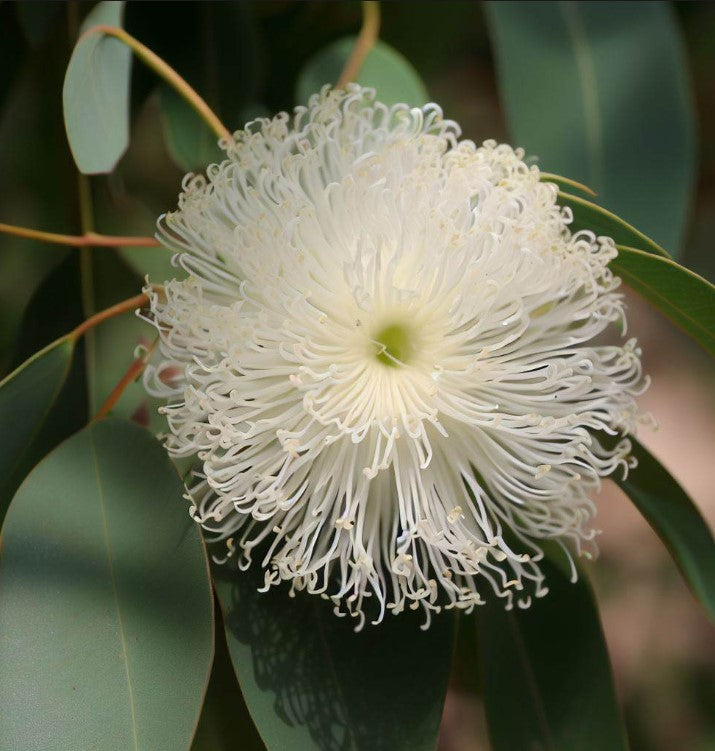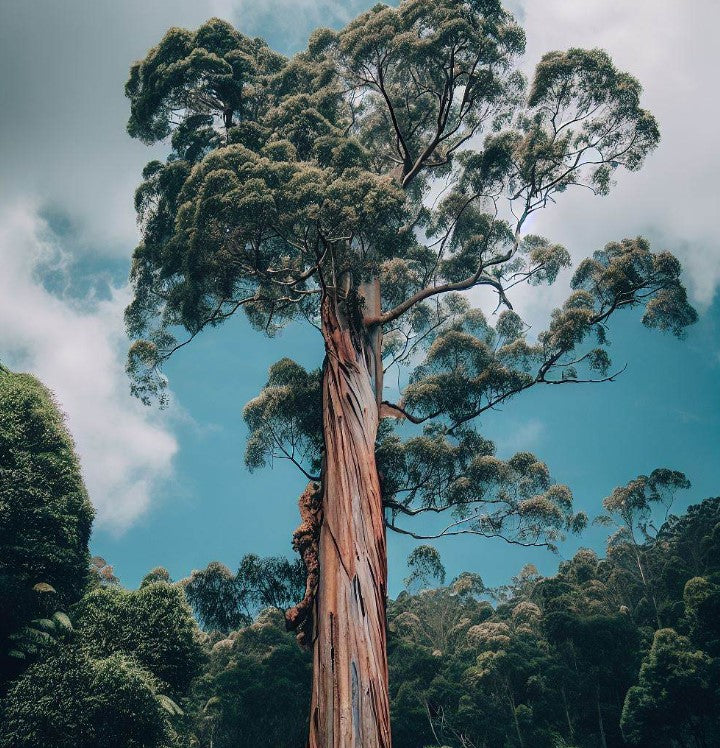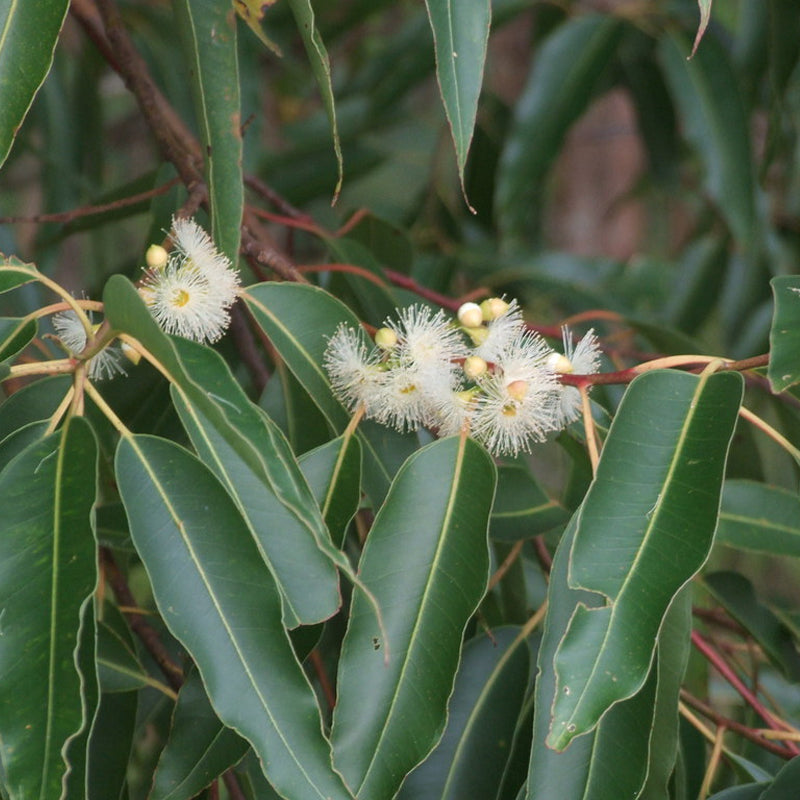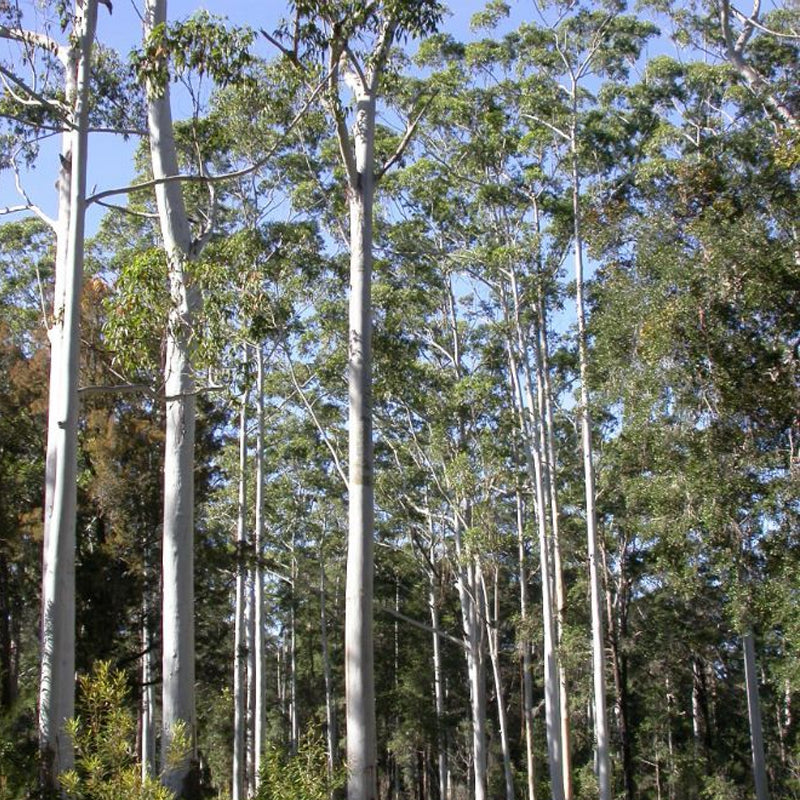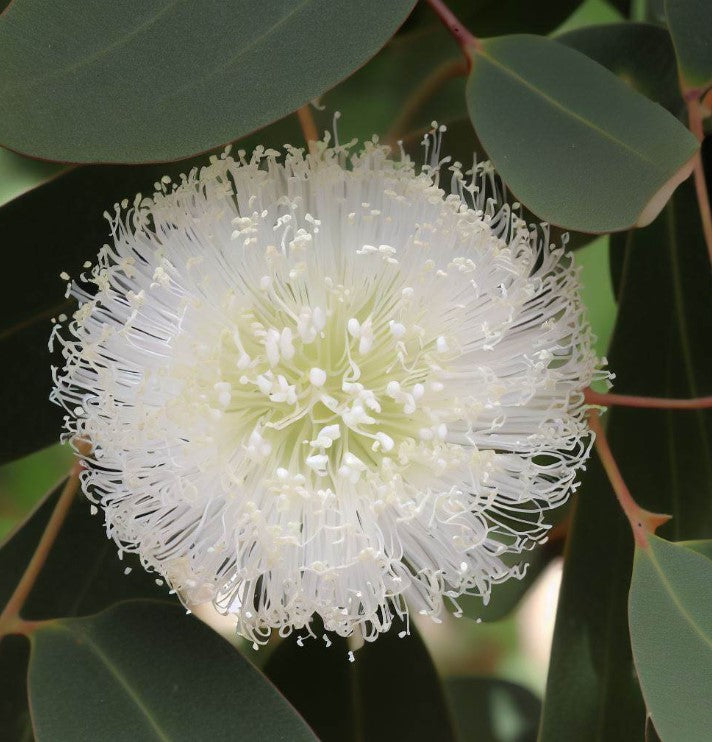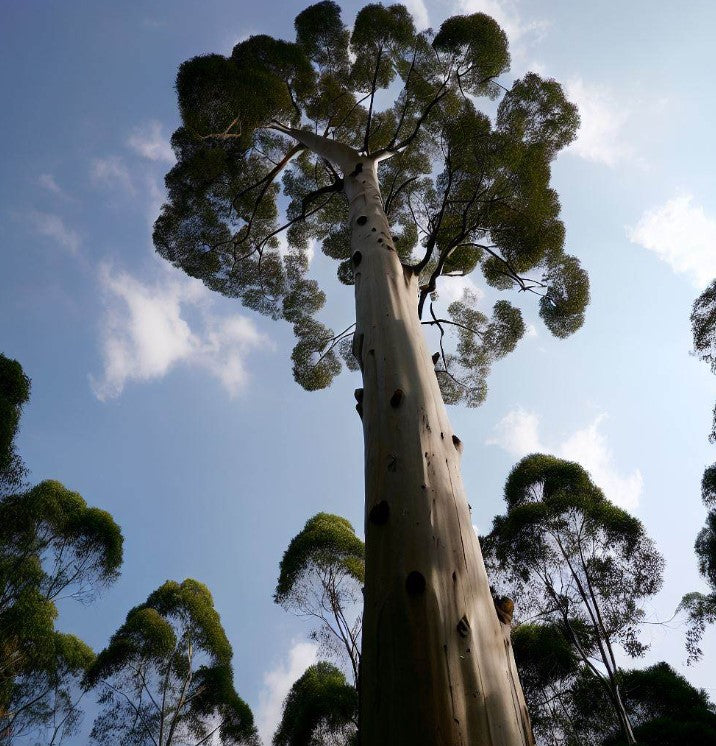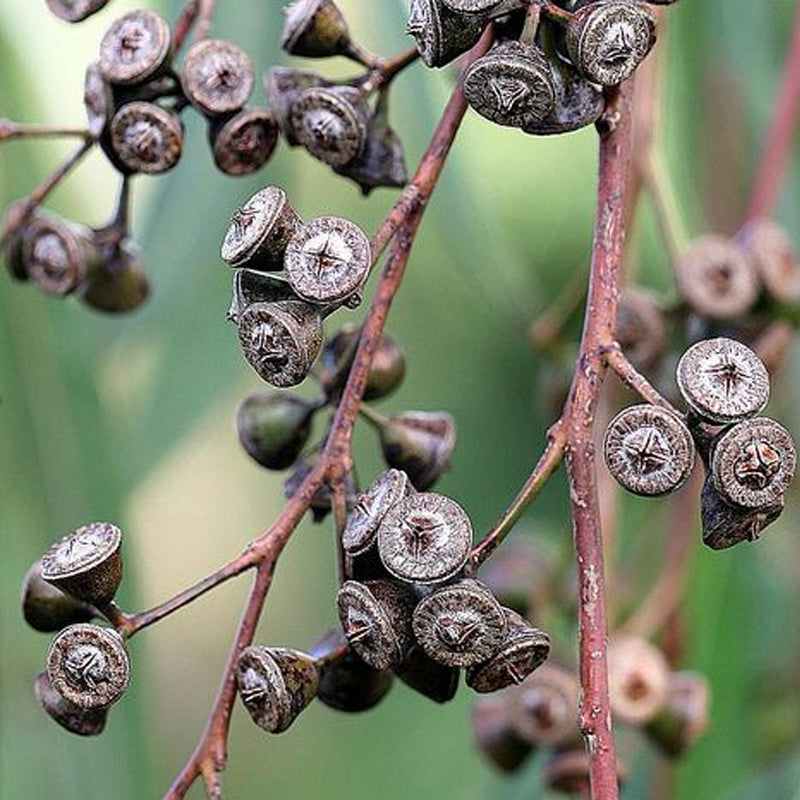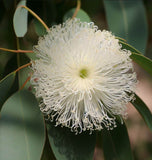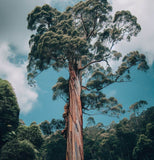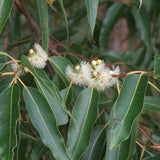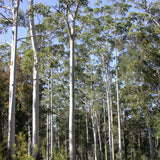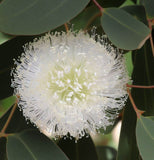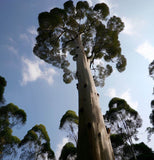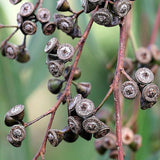Eucalyptus grandis (Rose Gum, Flooded Gum, Grand Eucalyptus)
Eucalyptus grandis (Rose Gum, Flooded Gum, Grand Eucalyptus) is a tall and stately tree native to Australia. It belongs to the Myrtaceae family, which includes other well-known eucalyptus species. Rose Gum is known for its impressive size, attractive appearance, and commercial value.
Physical Characteristics: Rose Gum is a large evergreen tree that can reach heights of 40-55 meters (131-180 feet) or even taller. It has a straight and cylindrical trunk, which can be up to 2 meters (6.5 feet) in diameter. The bark is smooth and mostly pale to dark gray, shedding in thin strips to reveal a smooth surface beneath. The canopy is dense and composed of glossy, dark green leaves that provide ample shade.
Flowers and Fruits: The tree produces clusters of small, cream-colored flowers with prominent stamens. The flowers are highly attractive to nectar-feeding birds, insects, and other pollinators. After flowering, Rose Gum develops woody capsules called gumnuts that contain numerous small seeds. The gumnuts mature and release the seeds, contributing to the tree's reproductive cycle.
Wood and Commercial Uses: Rose Gum wood is highly valued for its strength, durability, and attractive appearance. The heartwood varies in color from pale pink to reddish-brown, while the sapwood is lighter in color. The timber is commonly used in various construction applications, including flooring, furniture, cabinetry, and veneers. It is also utilized for posts, poles, and structural beams due to its strength and resistance to decay.
Ecological Importance: Rose Gum trees provide essential habitat and resources for numerous species. The flowers attract pollinators, including birds, bees, and insects, contributing to ecosystem health. The dense canopy and foliage offer shelter and nesting sites for various birds and other wildlife. The tree's seeds are a food source for birds and mammals.
Cultivation and Environmental Considerations: Rose Gum is widely planted in plantations and for forestry purposes due to its fast growth and valuable timber. It prefers well-drained soils in full sun but can tolerate a range of soil conditions.
Botanical Name : Eucalyptus grandis
Common Name : Rose Gum
Height : 100- 165 ft
Spread : 40 ft
Germination Info : Seed requires scarification prior to sowing
Hardiness zone : 9-11
Average seed per ounce : Approx. 87,500

